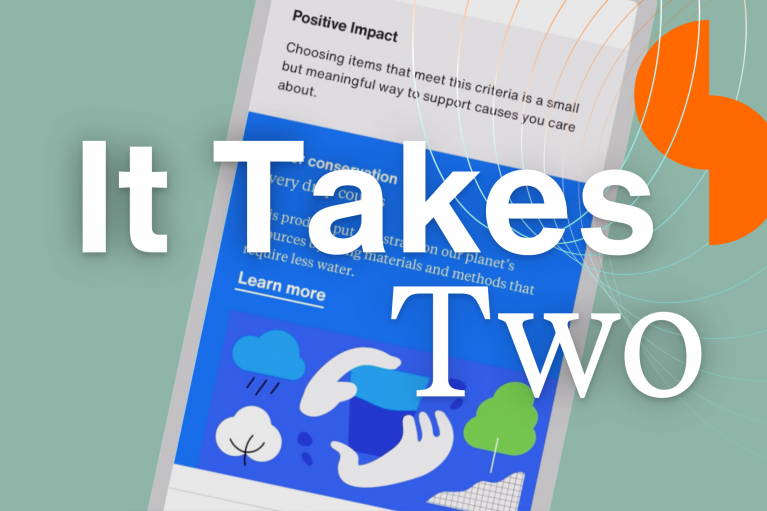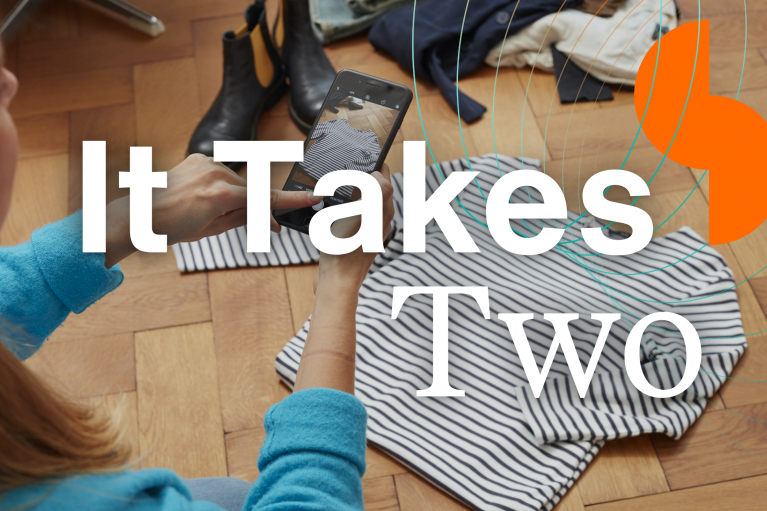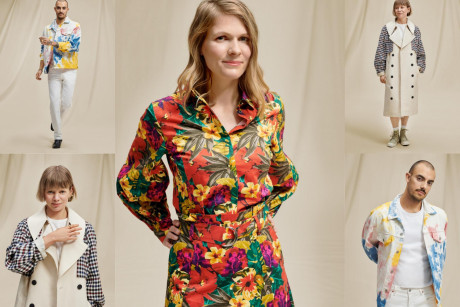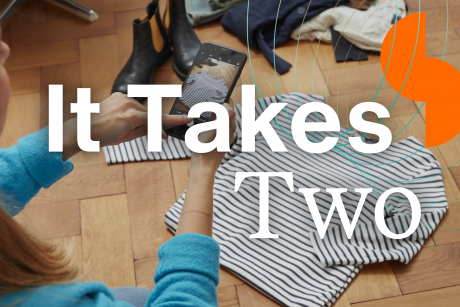10 Calls to Action From Zalando’s “It Takes Two” Attitude-Behavior Gap Report
10 Calls to Action From Zalando’s “It Takes Two” Attitude-Behavior Gap Report
How insights on the disconnect between ambition and reality in sustainable fashion shopping can move the industry forward
How insights on the disconnect between ambition and reality in sustainable fashion shopping can move the industry forward
In 2019, Zalando launched its do.MORE sustainability strategy, applying greater focus and resources to addressing societal and climate challenges. The strategy built on already existing improvements, such as flagging more sustainable items on the Fashion Store, and moved Zalando forward on initiatives that touched on every part of the company.
The coronavirus crisis, though challenging, has only encouraged us to strengthen our efforts, and not just us: consumers too. According to the Global Fashion Agenda (GFA), two-thirds of fashion consumers say that sustainability has been more important to them since the start of the crisis. The pandemic has sparked a mass re-evaluation of not only what is critical, but what is possible. There is an issue though; a disconnect between how consumers say they want to shop and how they actually do. With the launch of the Attitude-Behavior Gap Report, “It Takes Two: How the Industry and Consumers Can Close the Sustainability ‘Attitude-Behavior Gap’ in Fashion,” Zalando explores what that gap looks like, what we can all learn from it, and most important, how transparent collaboration between the fashion industry and consumers is the only way forward. It takes two, after all.
Why we chose to create this report
Fashion is experiencing something of an identity crisis. As consumers and brands become more invested in sustainability, a question is beginning to emerge: Can we participate in the fashion industry and also pursue sustainable ideals? In Zalando Research conducted during the pandemic, customers told us that shopping sustainably was more important than ever before. However, the report shows that this doesn’t necessarily translate into purchasing decisions. For example, 53% of consumers believe it is important to buy from brands with ethical labor policies, but only 23% ever investigate policies themselves. As Europe’s leading platform for fashion and lifestyle, we recognize the impact we can make here. We have a unique opportunity as a platform to connect our 3,500 partner brands and over 38 million customers. Our aim: to influence positive change in the industry by pushing ourselves, our partners and the larger fashion industry to enable customers to shop more sustainably. We start by exploring what the attitude-behavior gap looks like and how we can help close it.
How we conducted the report
We used a three-stage approach when compiling this report. We conducted a deep ethnographic study with 12 Zalando customers from Germany, Sweden and the UK. We spent time with them, got to know their shopping habits and values. Scaling our learnings from phase one, we also conducted a quantitative survey with 2,500 consumers based across Germany, Sweden, the UK, Italy and France. Participants were 50/50 male and female, and likewise 50/50 millennial (born 1981-1996) and Gen Z (born 1997-2012). Our third stage was collaborating with fellow industry experts and organizations on the recommendations outlined in the report: H&M, adidas, Filippa K, Global Fashion Agenda, Sustainable Apparel Coalition, McKinsey, London College of Fashion.
The report includes clear and actionable recommendations and best practices. Here, we’ve organized the recommendations into three pillars: Communicate Clearly, Motivate Changes in Behavior and Scale Circularity. Guided by the principle that collaboration between the industry and consumers is the only way forward, we hope to inspire collaborative action and long-lasting change.
Communicate clearly
Every second customer does not understand what sustainability means in a fashion context, even if it has been trending for several years now. Some 60% of survey respondents say that transparency is important to them, but just 20% actively seek out information as part of the purchasing process. Customers are skeptical, overwhelmed and confused. We target these challenges when we communicate clearly.
Speak a sustainability language that everyone can understand
Team up with other players to create industry-wide sustainability standards, based on a common language, and leveraging data from brands, retailers and factories. Ensure that the language used is easy for customers to understand and consistent across the industry.
Influence wisely, balancing social voices with those of your customers and employees
Balance social voices and give your customers credible role models by showcasing the sustainability journeys of relatable people. Use micro-influencers, or let your employees and customers shine in your marketing campaigns. Stand up for topics that your customers care about and align your communication strategy with your brand values.
How we started to... Communicate clearly
Our sustainability flag, available for some years now, lets customers choose products that meet at least one of our sustainability criteria, covering third-party social, environmental and animal welfare standards. Building on this, Zalando launched a new value-based browsing experience through which customers are now able to shop based on the values they care about most, such as water conservation, worker wellbeing, reusing materials, animal welfare, reducing emissions, and extending the life of fashion. These impact areas help customers better engage with sustainable fashion and support customer choices on an emotional level, represented through easy-to-understand and colorful content layers.
Zalando Enables More Customers to Shop Sustainably With New Value-Based Browsing Experience
Insights on the challenges and solutions in speaking a sustainability language everyone can understand
Motivate changes in behavior
In our survey of 2,500 customers, we found that consumers often feel that sustainability in fashion is a burden they’re unable to carry. An astounding 82% of customers experience “buyers regret” when it comes to their “on sale” fashion purchases. This can be an enormous barrier to engaging with sustainable fashion. Brands and retailers can help ease this anxiety, creating a truly joyful sustainable shopping experience where customers feel emboldened and inspired.
Take steps toward transparency and bring your customers on the journey
View transparency as a creative opportunity, sharing supply chain information with your customers and/or publishing photos of supplier factories on your website. Move toward being open and humble about your impacts and progress, and share stories that go deeper into your production processes and show how you are becoming more sustainable throughout the value chain.
Help your customers buy into your sustainability brand mission
Identify and invest in the changes that will make the biggest impact for your business and on your customers. Would cutting back on plastics make an impact or should you focus on circularity? When you’ve identified your mission, share it with your customers so they can experience the journey too.
Help your customers buy right, not more
Create awareness around more sustainable products and choices, and the benefits that these bring. When communicating with your customers, take the product life cycle into account, so they can understand the range of sustainable options available at every stage.
How we started to… Motivate changes in behavior
Following our campaign “A collaborative approach. Zalando on sustainability” in 2020, this year on April 22 Zalando customers will see sustainable fashion campaigns on our homepage in a Sustainable Fashion takeover. Events like this create visibility and allow us to celebrate our sustainability efforts and mission with our customers. We are also launching “The Academy,” which brings together thought leaders and sustainability experts with fashion influencers who want to learn more about sustainable fashion and pass those learnings on to their followers.
Scale circularity
71% of consumers indicate a shift towards investments in higher quality garments and a deepened interest in circular fashion such as resale, rental or refurbishment following the coronavirus pandemic. One in every two customers want brands to offer a secondhand option to help them act more sustainably. Resale is one of the few parts of the fashion industry to see growth during the pandemic, so now’s our chance to scale circularity.
Use data and technology to fix unsustainable discounting
Tackle overstocking through better planning and streamlined operational capabilities. Begin by optimizing your operations with smart planning and digital systems. Invest in machine learning and AI to improve your forecasting. Go one step further by exploring new business models, such as on-demand production capabilities.
Boost conversion on sustainable products with motivating factors such as quality and fit
Since value, quality and fit trump sustainability as motivators, use smart merchandising to position sustainable products around these benefits. For instance, highlight the quality benefits of organic cotton and communicate “cost-per-wear” to show value for money. Present products as investments that will stand the test of time.
Integrate circularity throughout the product life cycle
Upskill your team in circular design, combat the challenge of overstocking and pilot and test new business models like resale or rental. Review the impact of your take-back schemes and use learnings to scale your programs.
Invest in secondhand
Fight the secondhand stigma by showcasing new and secondhand together in marketing campaigns, retail environments and on social media. Add second-hand schemes in-store and online, or partner with resale specialists. Help your customers see that second-hand is as good as new.
Help your customers care for and repair their clothes
Stay in touch with your customers through after-purchase care. Provide care instructions, for example, on how to wash or store garments to ensure that they last. This will both help your customers care for their clothes and foster engagement and loyalty. In addition, by providing information after purchase and selling items customers truly love, you give them a reason to get back in touch.
How we started to… Scale circularity
We are members of the Ellen MacArthur Foundation and plan to integrate the principles of circularity holistically across a product’s life cycle. We use big data and machine learning for smart planning and to predict activities, behaviors, and trends, in order to forecast accurate production planning. Our “redeZIGN for Circularity” capsule collection was designed with the principles of circularity in mind and was a first step to setting circularity criteria for products and include these in our sustainability flag framework. To enable more customers to extend the life of their clothes, Zalando rolls out its Pre-owned category from seven to fourteen of its 17 markets on April 22, when customers in Italy, the Czech Republic, Sweden, Finland, Denmark, Ireland, and Austria will also be able to quickly and effortlessly trade in and buy pre-owned garments directly on Zalando. We also plan to introduce a range of digital products and offline services to help customers extend the life of their wardrobes through trusted, engaging multimedia content and easy-to-access local repair options.
Zalando Launches Pre-Owned in 7 New Markets
With the internationalization of “Pre-owned,” extending the life of fashion items becomes fun and easy for more Zalando customers across Europe
What's next?
We believe the 10 recommendations for the industry presented in the report will play a critical role in moving the industry toward a more sustainable business model, however, what we present here aren’t commandments. We understand that individual companies face complex situations, none of which are easily solvable with a “one-size-fits-all” solution. We understand, too, that we are on a journey ourselves.
So where do we go from here? We see this as the start of a new collaboration with our peers, so that the industry as a whole can work more effectively on sustainability. We want to “walk the talk” of what we learned in the “It Takes Two” report, and we believe that now is the time for bold actions that will make a difference.

Zalando Enables More Customers to Shop Sustainably With New Value-Based Browsing Experience
Insights on the challenges and solutions in speaking a sustainability language everyone can understand

Zalando Launches Pre-Owned in 7 New Markets
With the internationalization of “Pre-owned,” extending the life of fashion items becomes fun and easy for more Zalando customers across Europe

Country Specific Data From Zalando’s Attitude-Behavior Gap Report
Take a closer look at the findings of “It Takes Two” across Germany, Sweden, the UK, France and Italy


